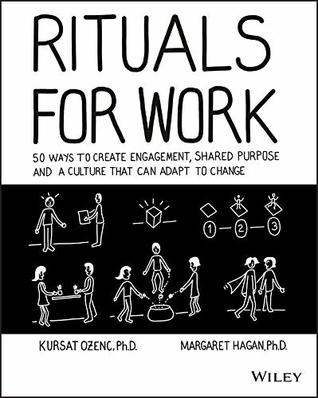More on this book
Community
Kindle Notes & Highlights
by
Kursat Ozenc
Read between
September 8 - September 23, 2019
Rituals can be one powerful strategy to improve our work lives—and help us act more like we aspire to be. They are practices that can bond people together, help us move through conflicts, amp us up to better performances, and assist us in adapting to change.
Rituals are ways to bring these big, abstract ideas into daily practice. By default, they involve physical actions and concrete behaviors. A good ritual will take the underlying values and intangible beliefs of a company—all these valuable, invisible things—and make them visible, interactive, and lively real-world practices throughout the organization.
A ritual sets up a clear path for people to follow, and it calls up a sense of meaning and connection—which drew people in.
Rituals have special power to bond people together and to make sense of their world. As we began experimenting with rituals as a means for individual growth and organizational change at work, we learned that in a very short time and with minimal budget, rituals can bring liveliness, lightness, and a sense of community to a group.
Rituals make beliefs concrete and graspable for people.7 People gravitate toward the function and structured behavior that rituals offer. This structure brings people a sense of things being in their control and with a sense of meaning.
A recent review of scholarship on rituals found that the actions of physically going through rituals help people feel satisfied and in control.9 The ritual actions regulate people's emotions, keeping them calm. Rituals also regulate people's performance, helping them to act in a steadier and more focused way. Finally, rituals regulate people's sense of belonging, giving them a stable feeling of social connection.


